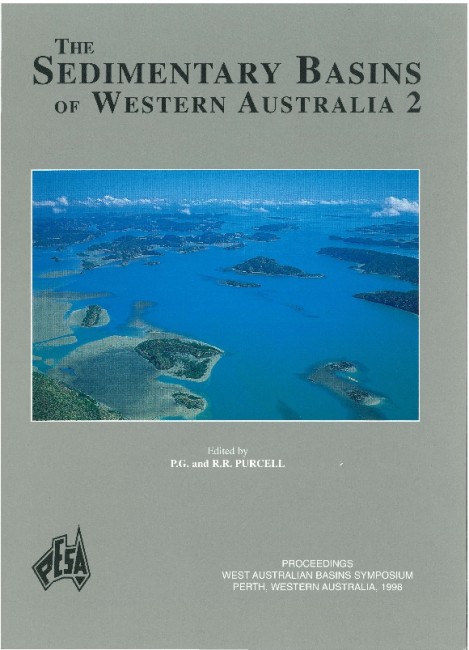Publication Name: The Sedimentary Basins of WA
Authors: K. Tindale, N. Newell, J. Keall and N. Smith
Publication Volume: 2
Date Published: December 1998
Number of Pages: 37
Reference Type: Book Section
Abstract:
The Exmouth Sub-basin forms part of the Exmouth-Barrow- Dampier intra-cratonic rift system of the Northern Carnarvon Basin. These sub-basins contain significant thicknesses of Upper Jurassic Dingo Claystone, which constitutes the principal hydrocarbon source facies in the region.The Exmouth Sub-basin has undergone a complex tectonic history. At least two phases of uplift and erosion occurred during the Cretaceous, with further inversion and tilting in the Tertiary. Hydrocarbon data also indicate that the region has a complex, multiphase charge history. This complexity is reflected in the variety of hydrocarbon types, which range from heavy, biodegraded oil, through light oil with gas caps, to dry gas columns.
Basin modelling, combined with geochemical analysis of hydrocarbon accumulations in the area, suggests a three-phase charge history for the Dingo Claystone. The first phase occurred during the Cretaceous, when deposition of thick Barrow Group sediments pushed the Dingo Claystone into the oil window. Uplift and erosion in the Valanginian, and again in the early Santonian, focussed oil migration pathways to the south, probably leading to significant hydrocarbon loss where the regional seal was thin or absent. Sub-aerial exposure of the sediments resulted in an influx of fresh water with subsequent biodegradation of hydrocarbons. Examples are found in the heavy biodegraded oil accumulations at Novara 1 and the Pyrenees Field. Traces of residual
biodegraded oil columns in the Griffin Field and in accumulations across the southern Barrow Sub-basin suggest that this early oil phase was widespread.
A later charge has been identified in the Macedon and Pyrenees fields, which contain dry, heavily
biodegraded gas. The limited distribution of the gas suggests that it originated in the Exmouth Sub-basin. The exact timing of the charge is equivocal; however, structural reconstructions over the Macedon Field suggest that migration occurred sometime after the Campanian.
A third phase is considered to have charged the light oil discoveries at Griffin and along the southern margin of the Barrow Sub-basin. On the basis of geochemical analysis of the oils and basin modelling, it seems likely that this charge originated in the Barrow Sub-basin, where thick Tertiary carbonates provided the burial that pushed the Dingo Claystone into the oil-generation window. This light oil phase is yet to be encountered in the Exmouth Sub-basin.


